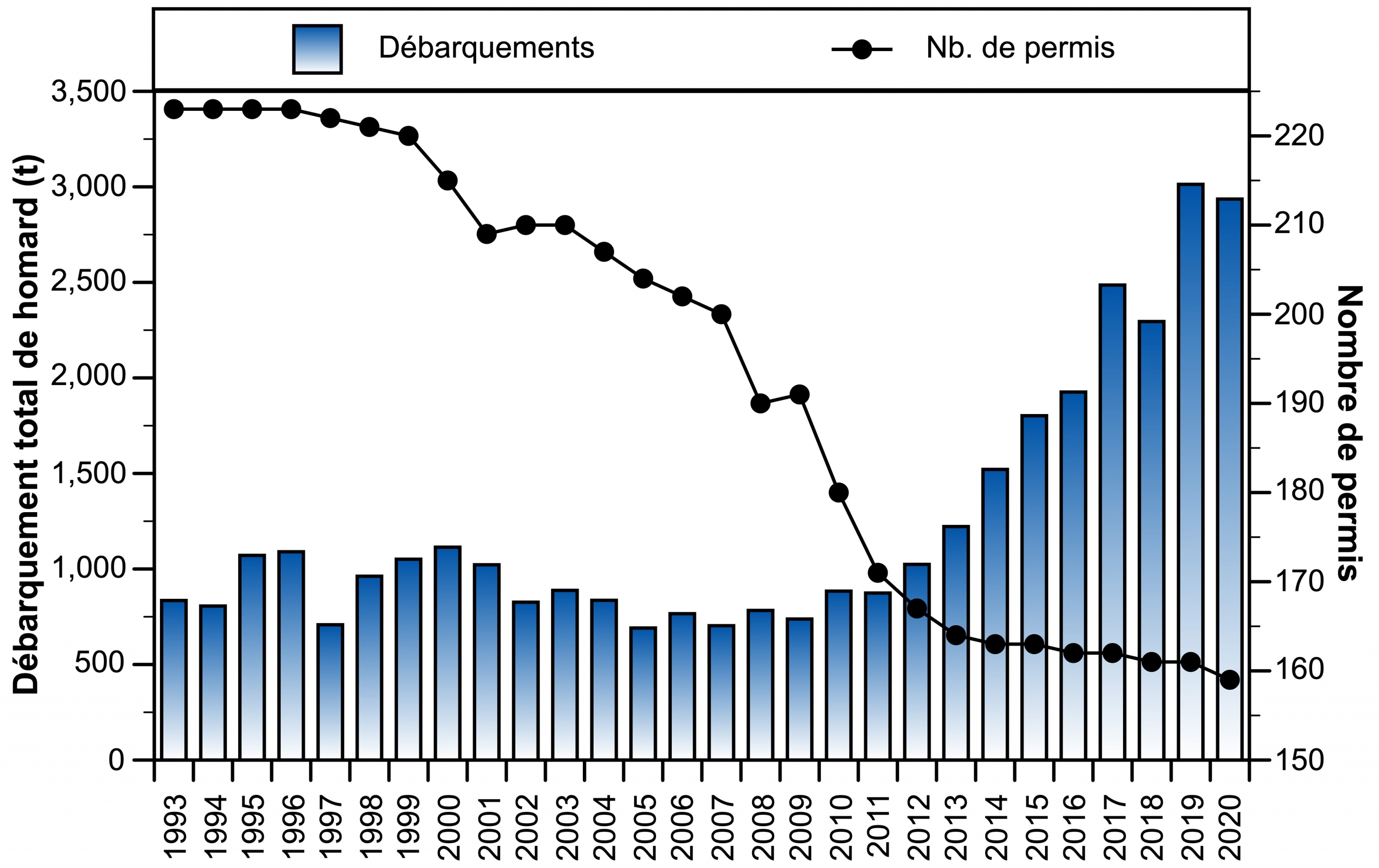Gaspé lobster fishers have long taken measures to preserve lobster stocks and ensure that fishing remains a decent and stable long-term livelihood.
Conservation measures adopted
To double egg production:
- Gradual increase in the minimum catch size from 6-7 mm;
- Mandatory release of females marked with a “V” notch;
- Imposition of a maximum catch size.
To reduce fishing effort:
- Rationalization of the fishing fleet by license buybacks;
- Reduction in the size of traps and the number of traps per permit;
- Reduction in the number of fishing days and ban on lifting the traps more than once a day;
- Reduction of the number of traps per line and the length of the lines;
- Mandatory installation of biodegradable escape vents.
Rationalization of the fleet
Too much exploitation of a resource in relation to its availability can compromise the sustainability of a fishery. That is why the number of lobster licenses has been reduced significantly over the past 25 years. Only 161 licenses have been exploited since the elimination of 62 licenses bought back by the RPPSG, fishermen and governments. This reduction in fishing effort has made it possible to have an abundant resource today, increasing landings and fishermen earning an adequate income.
Stock assessment
Good management of lobster stocks begins with a good stock assessment based on indicators of abundance, demography, fishing pressure and productivity. The RRPSG and its fishermen collaborate in the acquisition of fishing data, during the season and during a post-season survey, on the number of lobsters caught, their sex and size, their reproductive status and their spatial distribution. The data they provide to Fisheries and Oceans Canada helps to understand the resource well and to exploit it sustainably.





